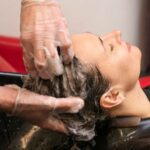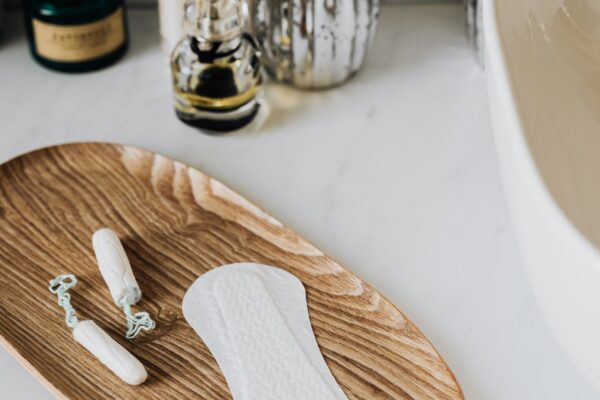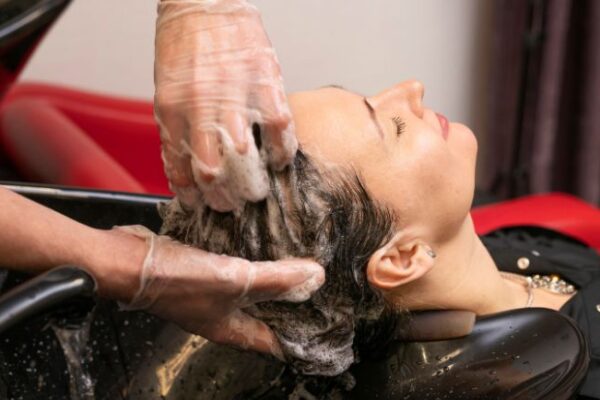If you want to know a helpful guideline about how to massage face after facelift. Then you are in the right place. a facelift is a significant decision that many individuals make to rejuvenate their appearance and restore a more youthful look. Facelift surgery, also known as rhytidectomy, is a cosmetic procedure designed to rejuvenate the face by addressing signs of aging such as sagging skin and wrinkles.
While the surgery offers remarkable results in restoring a more youthful appearance, it is essential to understand the healing process. A successful recovery requires proper care, patience, and adherence to post-operative guidelines. That’s why you should know how to get rid of lumps after facelift, and how to do lymphatic massage after facelift. Those are very essential to fast recovery after facelift surgery.
Facial massage after a facelift can be a valuable component of your post-surgery care routine. When done correctly and in consultation with your surgeon, it can contribute to a faster and smoother recovery process. Remember to follow the specific guidelines provided by your surgeon, and always prioritize gentle and controlled movements to ensure the safety and effectiveness of the massage.In this article, we will provide a helpful guideline on how to massage face after facelift and how to perform it safely and effectively.
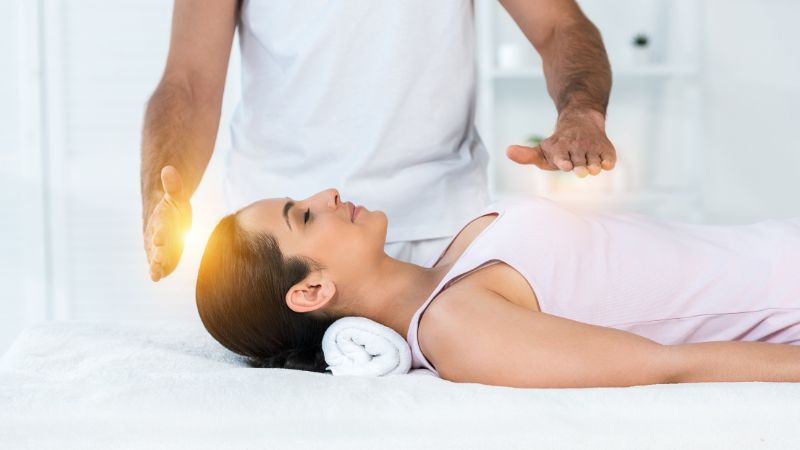
Understanding the Healing Process
The initial days after facelift surgery are critical for the healing process. Patients are typically monitored in a medical facility for a short period to ensure there are no immediate complications.
Swelling and Bruising
Swelling and bruising are common after a facelift. These effects are most prominent during the first week but gradually subside over the following weeks.
Downtime and Rest
Patients should plan for a period of downtime following facelift surgery. Rest is crucial for the healing process, and strenuous activities should be avoided for several weeks.
Stitch Removal and Follow-Up Appointments
Your surgeon will schedule follow-up appointments to monitor your progress and remove any stitches or drains. It’s crucial to attend these appointments and communicate openly with your surgeon about any concerns or questions you may have.
Scar Management
Facelift surgery involves incisions, and while surgeons take great care to place them discreetly, scarring is an inevitable part of the process. However, scars tend to fade significantly over time. It’s essential to follow your surgeon’s instructions on scar care.
Long-Term Results
The full results of a facelift may take several months to become apparent as the final healing process unfolds. It’s important to maintain the tricks of how to massage face after facelift to get good results.

When to Start Massaging After a Facelift
A facial massage should begin in the first few days after surgery. Also, the focus should be on rest and minimal movement. Massaging during this period may be counterproductive and could potentially disrupt the delicate healing process.
Once your surgeon removes any sutures or drains, which typically occur within the first week or two, you may receive clearance to stage the routine.
People are interested in knowing how to massage face after facelift. Posstart gentle massage, and always consult your surgeon before beginning any matoperative Weeks. Most surgeons recommend beginning postoperative massage around 2 to 4 weeks after the facelift. At this point, the initial swelling and bruising have subsided, and the tissues are more stable. Noticing the face-lifting massage before and after, you will surprised.
Benefits of Facial Massage After a Facelift
Improved Circulation
Facial massage helps stimulate blood flow to the treated areas, aiding in the delivery of vital nutrients and oxygen to the skin cells. This improved circulation can accelerate the healing process and contribute to a healthier complexion.
Reduced Swelling and Bruising
Swelling and bruising are common side effects after a facelift. Gentle massage techniques can assist in draining excess fluids from the surgical site, diminishing swelling, and minimizing the appearance of bruising.
Scar Tissue Management
Massaging the incision sites can help prevent the formation of excessive scar tissue and promote a more even and inconspicuous healing process. This is especially crucial for ensuring a seamless, natural-looking outcome.
Relaxation and Stress Reduction
Post-surgery, individuals may experience tension and stress. Facial massage provides a soothing and relaxing experience, reducing muscle tightness and promoting a sense of well-being during the recovery period.
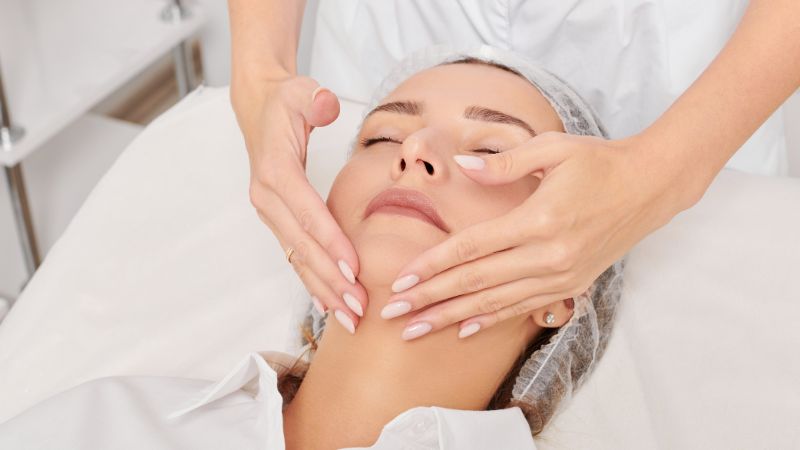
How to Massage Face After Facelift?
In the youth generation, it’s a popular requirement to know how to massage face after facelift. Here is a step-by-step guideline for post-facelift facial massage:
Wait for Clearance
Always consult with your surgeon before starting any massage routine. Wait until you receive clearance from your medical professional, typically a few weeks after the surgery.
Clean Hands and Face
Wash your hands thoroughly, and ensure your face is clean. Use a mild, fragrance-free cleanser to avoid any irritation.
Apply a Healing Oil or Cream
Use a healing oil or cream recommended by your surgeon to facilitate smooth movements and nourish the skin. Avoid any products that may contain harsh chemicals.
Gentle Tapping and Stroking
Begin with gentle tapping motions on the forehead, cheeks, and jawline. Follow with light stroking movements in an upward direction to promote lymphatic drainage.
Circular Movements
Use your fingertips to perform small, circular motions on specific areas, such as around the eyes and mouth. Be cautious around incision sites, applying minimal pressure.
Lymphatic Drainage
Lymphatic massage after facelift should be a priority. Cause it will help to get a fast recovery. Nowadays lymphatic drainage massage after facelift is very known to people. Gently massage the lymph nodes along the jawline and neck to encourage lymphatic drainage. Use light, sweeping motions towards the ear and down the neck.
Focus on Scar Management
Pay special attention to the areas with incisions. Use a gentle, circular motion to prevent scar tissue from becoming stiff and promote optimal healing.
Repeat Regularly
Incorporate facial massage into your daily routine as recommended by your surgeon. Consistency is key to achieving and maintaining the best results. Thus, we give you a clear conception of how to massage face after facelift.
Things to Consider While Doing Face Massage After Facelift
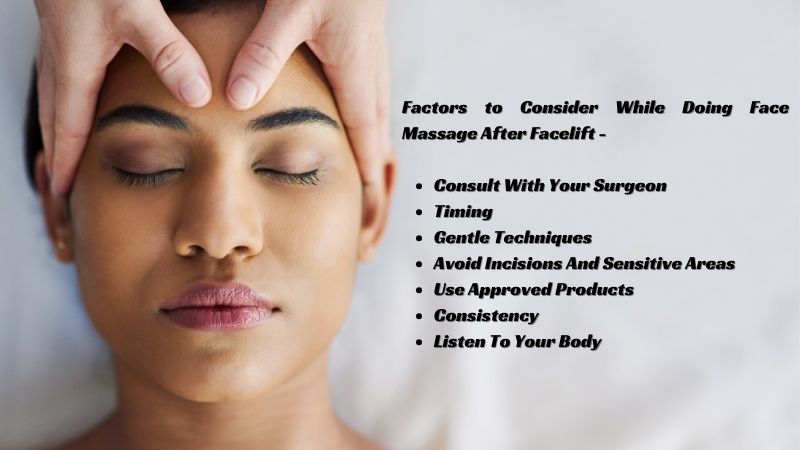
Consult with Your Surgeon
It is common to notice ridges in cheeks after facelift. Don’t worry about seeing a ridgeline bump on the cheek after facelift, through the massaging process it will reduce gradually. Before incorporating any facial massages into your post-facelift routine, it’s crucial to consult with your surgeon. Your surgeon knows the specifics of your surgery. They can provide personalized advice on when it’s safe to start facial massages and what techniques are appropriate for your recovery stage.
Timing is Key
Facelift recovery is a gradual process, and it’s essential to be patient. Most surgeons recommend waiting until the initial swelling and bruising have subsided before introducing face massage. This is typically several weeks after the surgery. Rushing into facial massages too soon can potentially disrupt the healing process and lead to complications.
Gentle Techniques
When you start incorporating face massage into your post-facelift routine, prioritize gentle techniques. Use light pressure and avoid aggressive motions that could strain or damage the delicate tissues. Consider using your fingertips or soft tools designed for facial massage to ensure a gentle touch.
Avoid Incisions and Sensitive Areas
It’s crucial to avoid massaging directly over incision sites and any areas that are still sensitive or healing. Focus on the broader facial regions and areas away from the surgical sites to prevent irritation or damage to the incisions.
Use Approved Products
If you choose to use skincare products or oils during your face massage, make sure they are approved by your surgeon. Some ingredients may be too harsh or irritating for post-facelift skin.
Consistency is Key
Regular, consistent face massages can contribute to improved circulation, reduced swelling, and enhanced skin elasticity. However, it’s essential to establish a routine that aligns with your surgeon’s recommendations.
Listen to Your Body
Pay close attention to how your skin responds to the massage. If you experience pain, or discomfort, or notice any adverse reactions, stop the massage immediately and consult with your surgeon. Your body will provide valuable feedback on whether you are ready for a face massage or need to wait a bit longer.
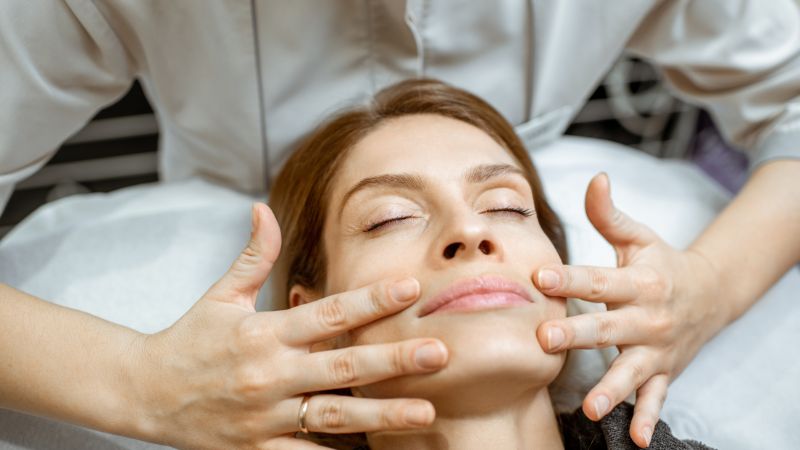
Conclusion
A facelift is a significant decision that many individuals make to rejuvenate their appearance and boost their self-confidence. It is very important to focus on how to massage face after facelift.
One valuable aspect of post-facelift care is facial massage, a therapeutic practice that can enhance circulation, reduce swelling, and promote overall healing. Facelift massage is a valuable adjunct to the recovery process after a facelift.
Always consult with your surgeon before incorporating any massage. With proper care and attention, post-facelift facial massage can contribute to a smoother, more comfortable recovery and ultimately enhance the results of your surgical journey.

